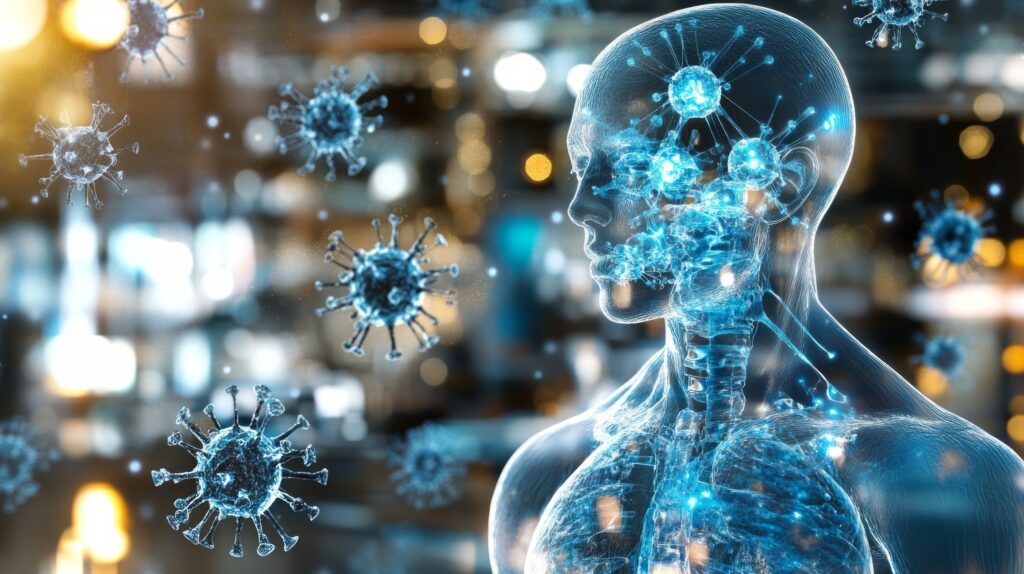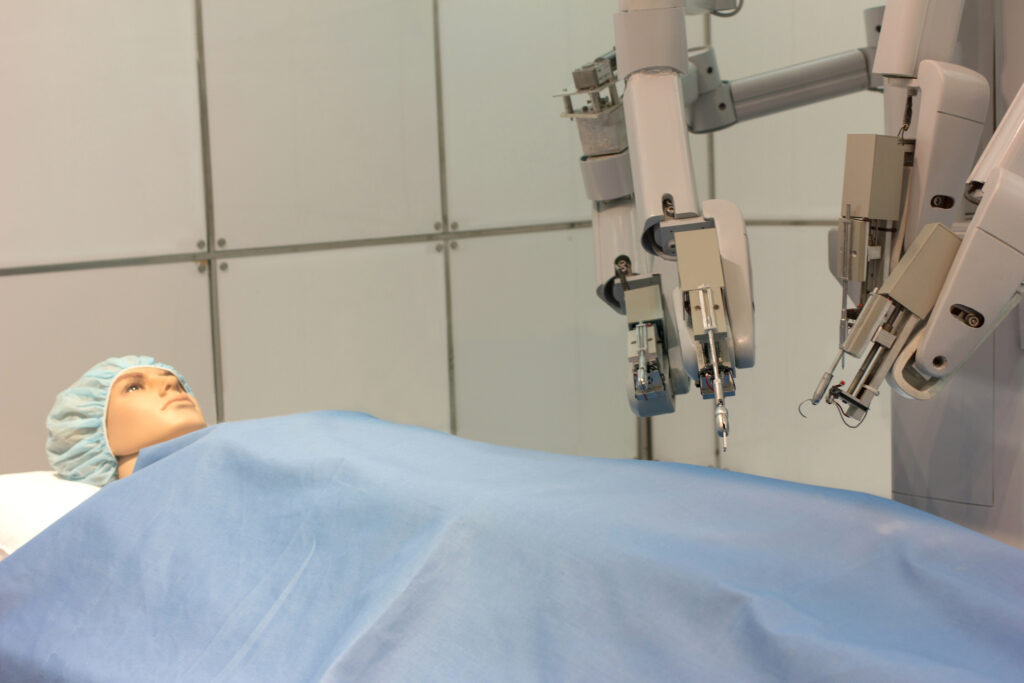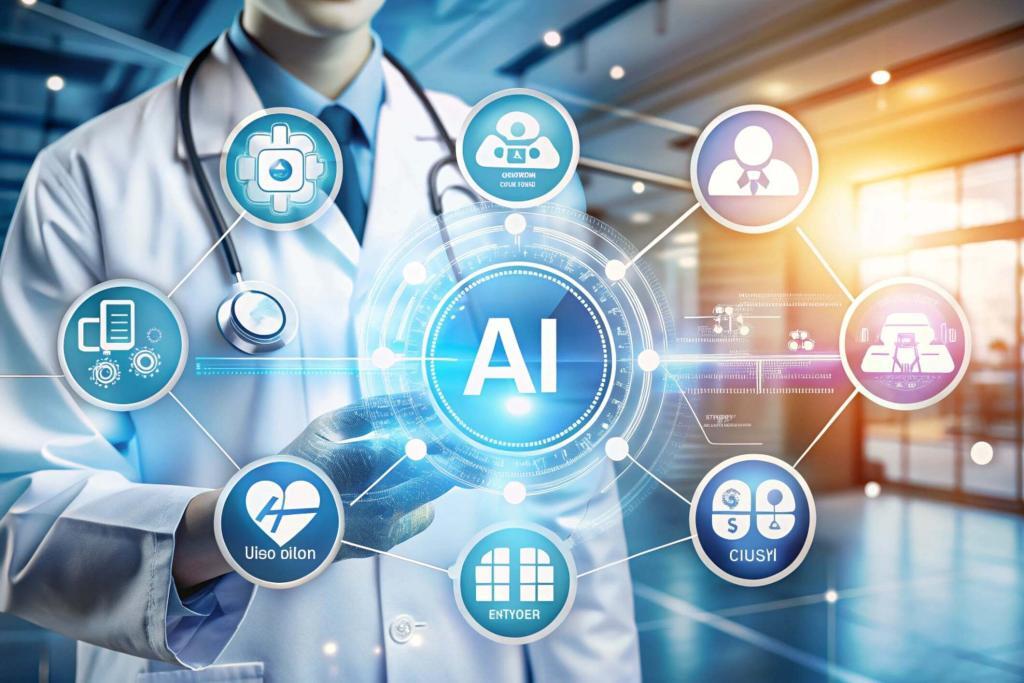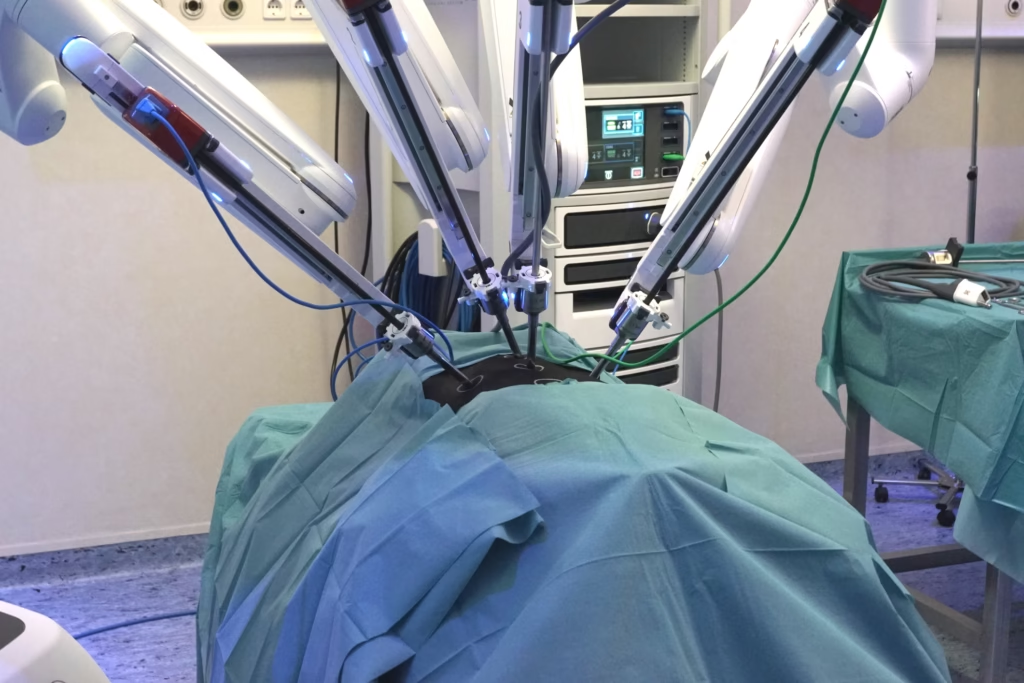Artificial Intelligence in medical imaging uses advanced algorithms to analyse medical images, improve diagnostics, and enhance precision and efficiency in healthcare.
AI and Deep Learning for Medical Image Analysis
Artificial intelligence (AI) is increasingly being used to improve image interpretation and analysis in medical imaging. AI algorithms can be trained to analyse medical images and detect abnormalities or subtle changes that may be difficult for humans to detect, leading to more accurate and efficient diagnosis and treatment of various conditions.
AI algorithms can detect early signs of breast cancer on mammograms, lung nodules on CT scans, and detect signs of Alzheimer’s disease on MRI scans. AI can also be used to analyse echocardiograms to assess heart function and diagnose heart disease.
In addition, AI can be used to improve the accuracy and efficiency of radiology reports by automatically generating preliminary information based on the analysis of medical images. This can help reduce the workload of radiologists and improve patient care by providing faster and more accurate reports.
Therefore, it is vital to ensure that AI algorithms are developed and used with human healthcare providers to provide the best possible patient care.
The Role of AI in Improving Medical Imaging Diagnostics
AI is increasingly being used to automate routine tasks in medical imaging, such as image processing, quality control, and data management. By automating these tasks, AI can help improve the efficiency and accuracy of medical imaging, leading to better patient care.
AI can automatically segment and label structures in medical images, such as organs and tumours, reducing the time and effort required by human healthcare providers. AI can also perform quality control checks on medical images, ensuring they meet the necessary standards for diagnosis and treatment.
In addition, AI can be used to manage and organise large amounts of medical imaging data, making it easier for healthcare providers to access and analyse this data. This can help improve the accuracy and efficiency of diagnosis and treatment by providing healthcare providers with a more comprehensive view of the patient’s medical history and imaging data.
By automating routine tasks in medical imaging, AI can help reduce healthcare providers’ workload and improve patient care quality. However, it is vital to ensure that AI algorithms are developed and used responsibly and ethically, with a focus on patient privacy and safety.
From Image to Diagnosis: AI-Powered Medical Imaging Techniques
With the advancement of technology, AI is increasingly being used to assist in the prediction and risk assessment of medical imaging.
One area where AI is being used is in the analysis of medical images to identify potential health risks or predict the likelihood of certain conditions developing. For example, AI can be used to analyse CT or MRI scans to identify cancer signs or detect the early stages of Alzheimer’s disease.
Another way AI is used in medical imaging is in risk assessment. AI models can be trained on large datasets of medical images and associated patient data to identify risk factors that may lead to certain medical conditions. Healthcare providers can then use this information to make more informed decisions about treatment options or take preventative measures to reduce the risk of certain conditions developing.
One of the advantages of using AI in medical imaging is that it can analyse large amounts of data quickly and accurately.
However, it is essential to note that AI does not replace healthcare providers. While AI can assist in analysing medical images, it is ultimately up to the healthcare provider to make the final diagnosis and treatment decisions based on all available information.
AI-Enabled Personalised Medicine: Revolutionising Patient Care
Personalised treatment planning involves tailoring medical treatments to individual patients based on their unique characteristics, such as their genetic makeup, medical history, and lifestyle factors. AI is increasingly being used in personalised treatment planning to help healthcare providers make more informed decisions about treatment options.
One way AI is used in personalised treatment planning is through predictive modelling. AI algorithms can analyse large datasets of patient information to identify patterns and predict how a patient is likely to respond to different treatments.
Another way AI is used is through image analysis. For example, AI algorithms can analyse medical images, such as CT or MRI scans, to identify specific features indicating a particular condition. This can help healthcare providers diagnose conditions earlier and more accurately, which can lead to more effective treatment outcomes.
AI can also be used in combination with electronic health records (EHRs) to provide more personalised treatment recommendations. EHRs contain a wealth of information about a patient’s medical history, including past diagnoses, treatments, and medications. AI algorithms can analyse this information to identify potential risks and recommend personalised treatment plans based on the patient’s unique health profile.
Overall, the use of AI in personalised treatment planning has the potential to improve patient outcomes by tailoring medical treatments to the individual needs of each patient. However, it is important to note that AI should not replace healthcare providers but rather be used as a tool to help support their decision-making processes.
Advances in Medical Imaging through AI and Computer Vision
AI can help researchers analyse large datasets of medical images and identify patterns or trends that may be difficult or impossible for humans to detect.
One area where AI is being used is in the development of new imaging modalities. For example, researchers use AI to analyse data from different imaging modalities, such as CT, MRI, and PET scans, to identify the strengths and weaknesses of each modality and determine how they can be combined to improve diagnostic accuracy.
AI is also being used to improve the accuracy of existing imaging modalities. For example, researchers are using AI to develop algorithms that can automatically correct image distortion and reduce noise in medical images, which can improve the quality and accuracy of the images.
Another way AI is being used in medical imaging research is through image analysis. AI algorithms can analyse medical images to identify specific features that may indicate a particular condition or disease, such as cancer. This can help researchers develop more accurate diagnostic tools and improve treatment outcomes.
Artificial Intelligence and Robotics in Healthcare: The Emergence of Robot Doctors
Currently, no robot doctor is capable of diagnosing patients on their own. While there are some robots being developed for use in healthcare, such as surgical robots, they are typically used in conjunction with human healthcare providers. They are not capable of diagnosing patients independently.
However, AI has shown promise in diagnosing certain conditions based on medical imaging data and other patient information. AI algorithms can be trained to analyse medical images and detect abnormalities or subtle changes that may be difficult for humans to detect, leading to more accurate diagnoses and improved patient outcomes.
It is important to note that AI algorithms cannot replace human healthcare providers. While they can provide valuable insights and support in diagnosing and treating certain conditions, they do not have the same level of clinical judgment and experience as human healthcare providers. Therefore, AI should be used as a tool to support healthcare providers rather than replace them.
Emerging Applications of AI in Medical Imaging: Opportunities and Challenges
The future of AI in medical imaging is expected to bring significant advancements in diagnosis, treatment, and personalised care. The key areas where AI is expected to have an impact include:
- AI algorithms can quickly analyse large datasets of medical images and identify patterns or abnormalities that may be difficult for humans to detect. This can lead to earlier and more accurate diagnoses, improving patient outcomes.
- AI can help healthcare providers develop personalised treatment plans based on a patient’s unique characteristics, such as genetics, medical history, and lifestyle factors. This can lead to more effective and efficient treatments tailored to each patient’s needs.
- AI can help researchers develop new imaging modalities or improve the accuracy of existing ones, leading to more precise and efficient diagnostic tools.
- AI can analyse data from EHRs, such as past diagnoses, treatments, and medications, to identify potential risks and develop personalised treatment plans.
- AI can be used to analyse medical images taken at home, allowing healthcare providers to monitor patients remotely and detect potential health issues early on.
Overall, the future of AI in medical imaging is expected to bring significant advancements in diagnosis, treatment, and personalised care, leading to improved patient outcomes and better overall healthcare. However, it is important to note that the development and validation of AI algorithms require careful testing and validation to ensure their accuracy and safety.
The Power of Big Data and AI
AI and data science are being used in medical imaging:
- AI algorithms can analyse medical images to identify patterns and abnormalities that may not be visible to the human eye. This can help healthcare providers make more accurate and timely diagnoses.
- AI algorithms can be trained to identify specific features in medical images that may be indicative of certain conditions, such as cancer. This can help healthcare providers detect potential health issues earlier and improve treatment outcomes.
- Data science can be used to analyse large datasets of patient information, including medical images, to develop personalised treatment plans based on a patient’s unique characteristics.
- Data science can be used to analyse large datasets of medical images and other clinical data to identify trends and patterns that can inform clinical decision-making and improve patient outcomes.
- AI and data science can be used to develop predictive models that can forecast the likelihood of certain health outcomes based on patient data, such as medical images, laboratory test results, and genetic information.
Disclaimer
The information provided in this article, “Revolutionising Medical Imaging with AI and Big Data Analytics”, is for general informational and educational purposes only. It is published by Open Medscience and reflects research, technological developments, and expert commentary available as of the date of publication (18 March 2023).
While the article discusses the potential benefits and emerging applications of artificial intelligence (AI), big data analytics, and related technologies in medical imaging and personalised medicine, it is not intended to replace professional medical advice, diagnosis, or treatment. The content should not be used as a substitute for consultation with qualified healthcare professionals.
Any references to specific medical imaging tools, AI technologies, or predictive models are illustrative and may not reflect current clinical standards or regulatory approval in all regions. The development, validation, and deployment of AI algorithms in healthcare settings require rigorous testing, clinical oversight, and ongoing monitoring to ensure safety, fairness, and effectiveness.
Open Medscience does not accept any liability for decisions made based on this article’s content. Readers are advised to consult appropriate medical, ethical, and regulatory sources, and to seek the guidance of licensed healthcare professionals when applying such technologies in clinical practice.
Use of AI and big data in healthcare must always prioritise patient privacy, data protection, and compliance with applicable laws and ethical standards.
You are here: home » diagnostic medical imaging blog »



